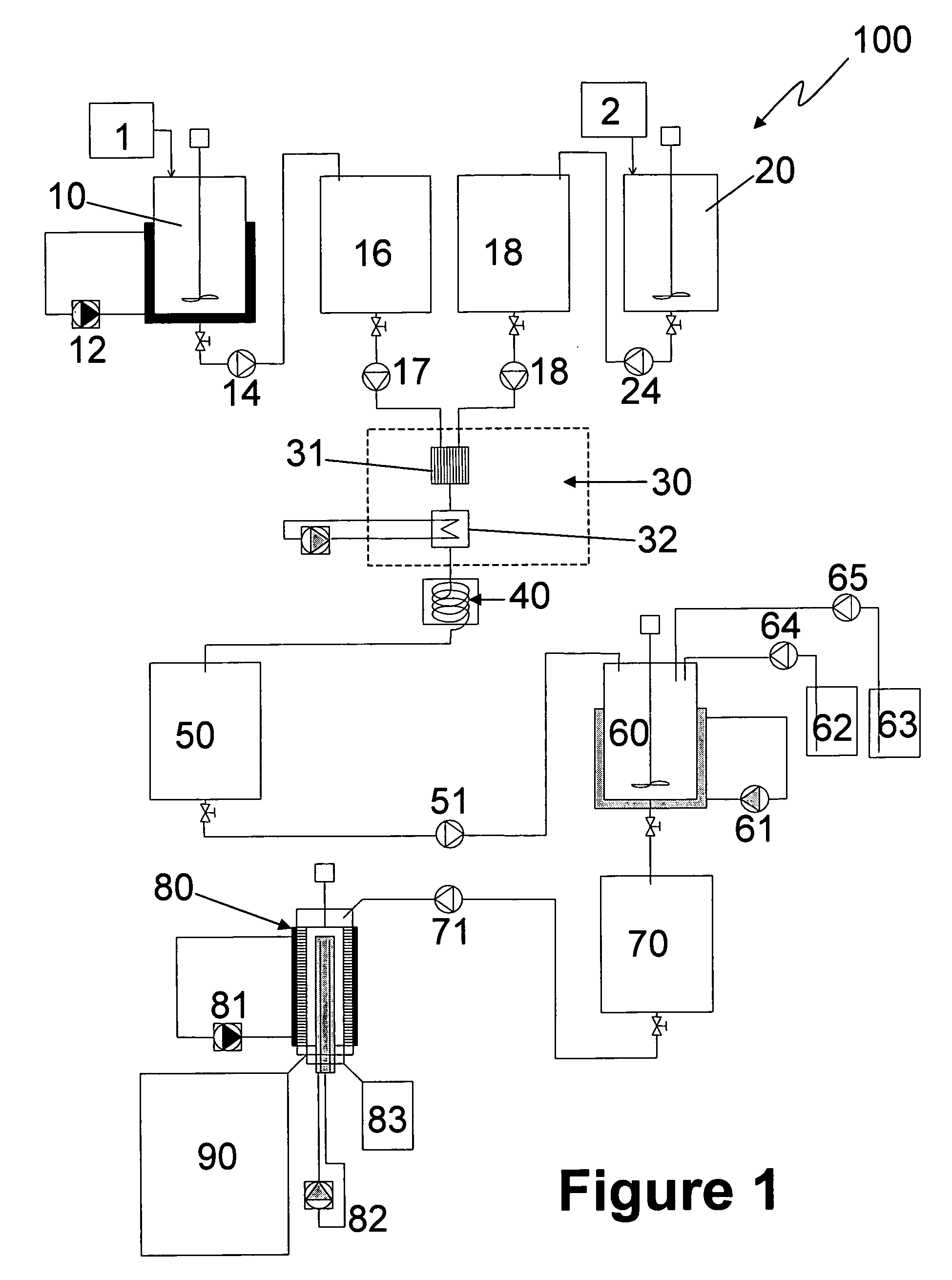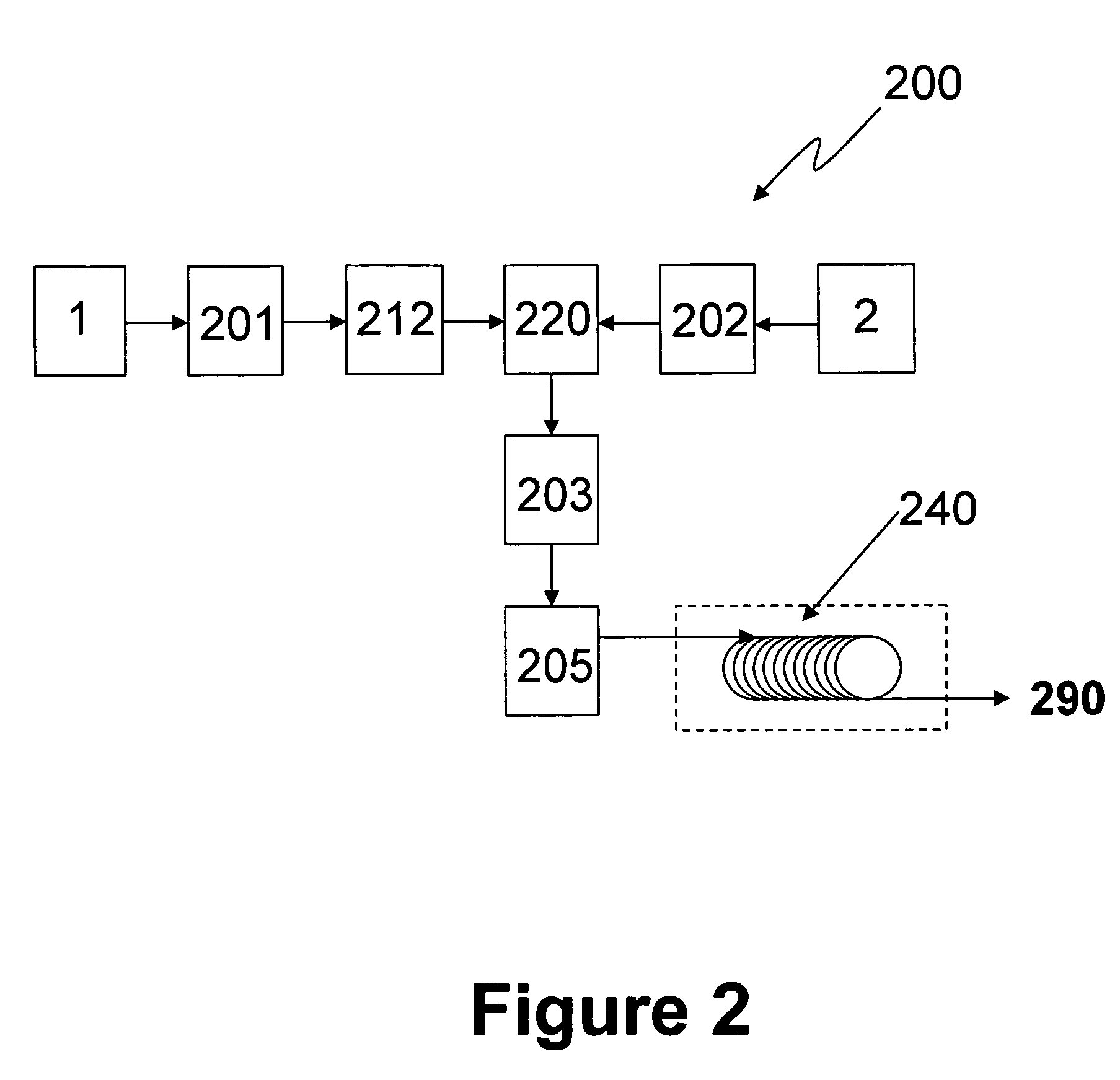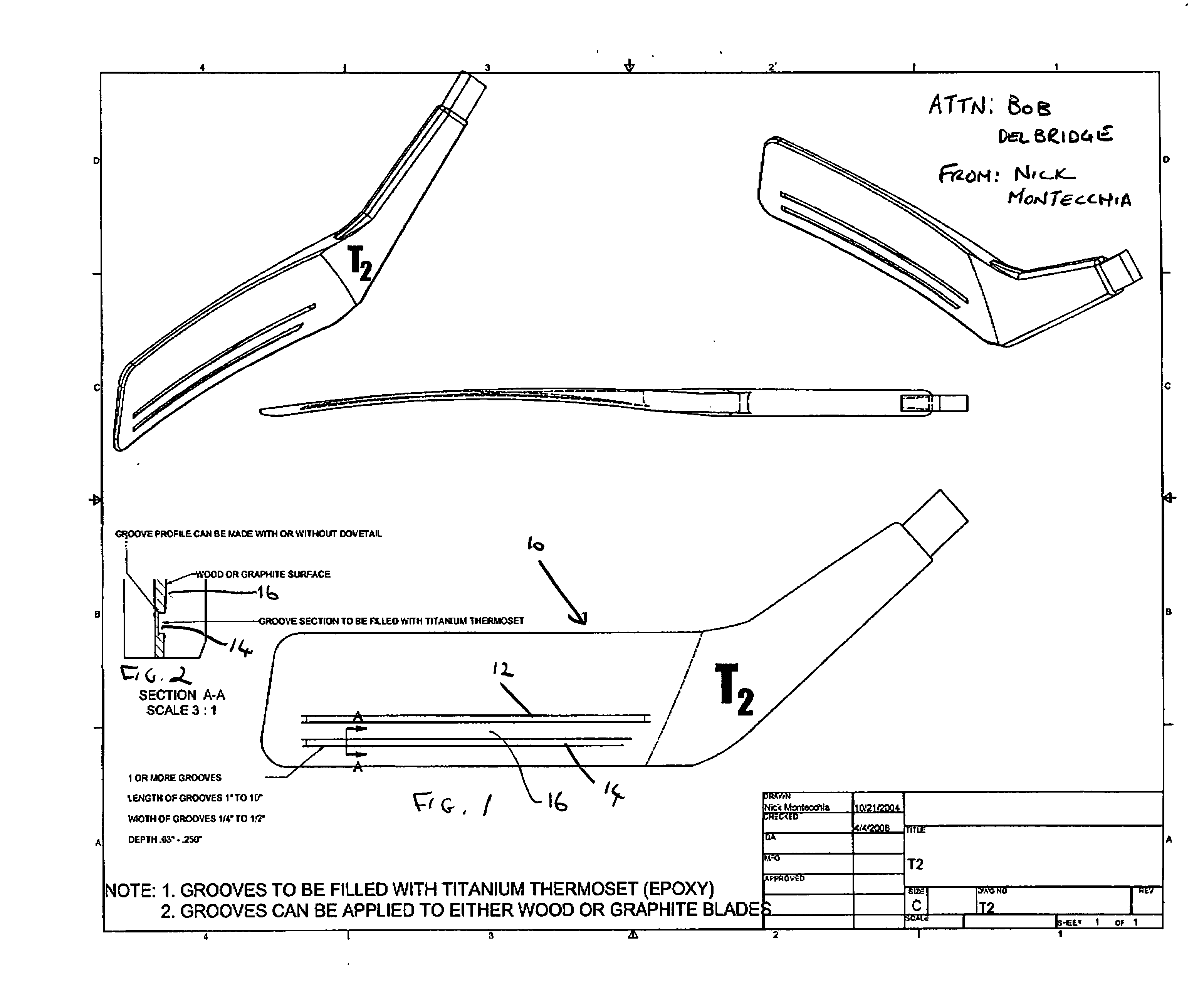Continuous process for production of polymeric materials
a polymerization process and continuous technology, applied in the field of mass production of contact lenses, can solve the problems of reducing the product quality of the polymer, affecting the product quality of the batch preparation, and the synthesis of the polymerized/crosslinked polymer materials may represent a considerable risk to people and the environment, so as to minimize or substantially eliminate unwanted high-molecular-weight fractions of the polymer, and disturbing the lamella flow of the reacting solution, the effect of reducing
- Summary
- Abstract
- Description
- Claims
- Application Information
AI Technical Summary
Benefits of technology
Problems solved by technology
Method used
Image
Examples
example 1
[0088] Preparation of an amine solution (solution A). Solution A is prepared by dissolving Jeffamine® XTJ502 (Hunstman Chemicals) and bis-hexamethylenetriamine (Aldrich Chemicals) in tetrahydrofuran (THF)-water mixture (in a ratio of 400 grams of THF to 250 grams of water) in a jacketed 1 L reactor and cool to an internal temperature of 0 to 5° C. with agitation. The concentration of Jeffamine® XTJ501 is about 84 milli-equivalents (meq) based on amine group of Jeffamine® XTJ501 (Hunstman Chemicals), the concentration of Jeffamine® XTJ502 is 50 meq based on amine group, the concentration of bis-hexamethylenetriamine is 26.8 meq based on amine group. [0089] Preparation of an isocyante solution (solution B). Solution B is prepared by dissolving isophorone diisocyanate (Aldrich Chemicals) and VESTANAT® 890 / 100 (Degussa Chemicals) in tetrahydrofuran (THF) to have 100 isocyante group meq of isophorone diisocyanate and 26.8 isocyante group meq of VESTANAT® T1890 / 100.
example 2
1. Copolymerization Without a Flow-Through Polymerization Reactor.
[0090] In a series of experiments, a reactor system as shown in FIG. 2 without the polymerization reactor 240 is used in preparing a polyurea polymer having terminal amine groups from solutions A and B. Plate-type of heat exchangers from EHRFELD Mikrotechnik BTS GmbH are used for the heat exchanger modules (201, 202). The heat exchanger module 203 is a coaxial heat exchanger from EHRFELD Mikrotechnik BTS GmbH. The micromixer module 220 is a slit plate mixer LH 25 from EHRFELD Mikrotechnik BTS GmbH. The temperature sensor module 205 and the pressure sensor module 212 are from EHRFELD Mikrotechnik BTS GmbH. The ratio of flow rate of solution A to solution B is maintained about 7:6. The total flow rate, which is the sum of the flow rates of solution A and solution B, varies from 2 ml / min to 15 ml / min. The temperatures of micro heat exchanger modules (201, 202) are almost identical and set at 15° C. or 20° C. The temper...
example 3
[0096] Preparation of actinically-crosslinkable prepolymers. Several resultant reaction mixtures containing amino group-capped polyurea polymer from Example 2 (three solutions from 3A and 6 solutions (tests 5-10) from 3B) are used to prepare actinically-crosslinkable polyurea prepolymer as follows. A reaction mixture is stirred for 30 minutes whilst maintaining an internal temperature of 0 to 5° C. Three additions of 22 grams of sodium carbonate (20% aqueous), followed by 3 grams of acryloyl chloride (Aldrich Chemicals) are made with approximately 30 minutes between each addition, whilst maintaining an internal temperature below 10° C. After the 3rd addition, the reaction mixture is stirred for a further 30 minutes whilst allowing the internal temperature to reach ambient. The reaction mixture is filtered over 17 μm sintered glass filter. The product is then concentrated on a rotary evaporator to afford a solution essentially free of THF. The solution is ultrafiltered over a 1-kiloD...
PUM
| Property | Measurement | Unit |
|---|---|---|
| length | aaaaa | aaaaa |
| diameter | aaaaa | aaaaa |
| diameter | aaaaa | aaaaa |
Abstract
Description
Claims
Application Information
 Login to View More
Login to View More - R&D
- Intellectual Property
- Life Sciences
- Materials
- Tech Scout
- Unparalleled Data Quality
- Higher Quality Content
- 60% Fewer Hallucinations
Browse by: Latest US Patents, China's latest patents, Technical Efficacy Thesaurus, Application Domain, Technology Topic, Popular Technical Reports.
© 2025 PatSnap. All rights reserved.Legal|Privacy policy|Modern Slavery Act Transparency Statement|Sitemap|About US| Contact US: help@patsnap.com



